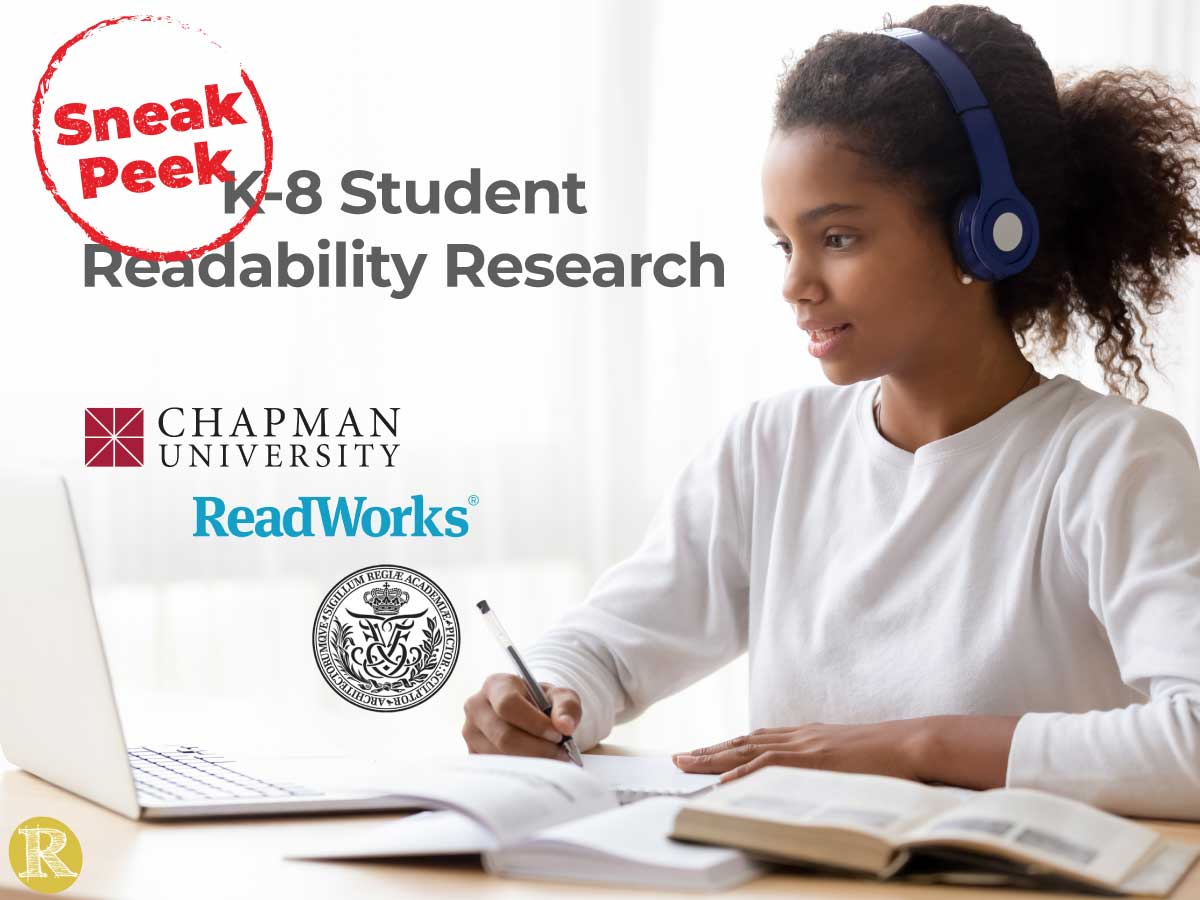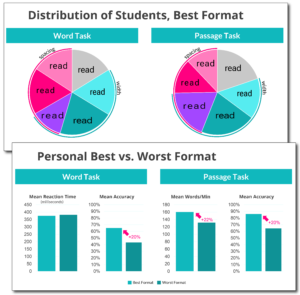Readability Formats Yield Significant Results for K-8 Students
Early Results Are In!
At the Adobe for Education conference, educator Dr. Susanne Nobles (ReadWorks) presented initial results from the K-8 Readability research study launched last fall. Susanne, together with cognitive scientist Dr. Shannon Sheppard (Chapman University), type designer, professor WSR and researcher Dr. Sofie Beier (The Royal Danish Academy – Architecture, Design, Conservation), have tested 240 students in a series of word and passage-level comprehension tasks using multiple reading formats. Early results demonstrate a clear connection; a student using their best reading format experiences an increase in their speed and accuracy of comprehension. The average improvement seen in both word and passage level tasks is more than 20%.
Results to Date
The research team designed six text formats using the variable font Roboto Flex with subtle changes in inter-character spacing and character width; one format modified both Readability Features. Students were tested reading the six text formats. Speed and comprehension changes were measured.
The distribution of each student’s best format is recorded. (See the pie charts, right.) It is interesting to note that all of the formats were best for a portion of the participants; reader variability is evident. As Susanne noted, even the least frequently optimal format still helped 12% of the students. With 35.5 million K-8 students in the US, that could translate to 4.2 million students that would benefit from using it.
The word task was measured in milliseconds, with no significant difference in reaction time expected. The experiment was designed to measure changes in comprehension. Results demonstrated a better than 20% gain in accuracy.
Student results on the passage task included a reduction in time spent reading and a simultaneous improvement in accuracy. Susanne pointed out that if the change in the percentage of questions answered correctly were considered, the increase was that of a D to a B.
The results presented include the following key findings:
- There is no best (or worst) format for all readers
- Subtle changes to text format create meaningful changes in speed and comprehension
- Personalized formats significantly improve reading comprehension for both word and passage-level reading
The study is ongoing; the researchers will submit a paper outlining the final results this fall. Check back for updates.
 ABOUT DR. SHANNON SHEPPARD: Dr. Shannon M. Sheppard is an Assistant Professor of Communication Sciences & Disorders at Chapman University. Dr. Sheppard also serves as the Director of the Cognition, Rehabilitation, and Neuroscience in Atypical Language Lab (CRANIAL Lab). Dr. Sheppard’s research focuses on investigating fundamental behavioral and neural processes of language comprehension.
ABOUT DR. SHANNON SHEPPARD: Dr. Shannon M. Sheppard is an Assistant Professor of Communication Sciences & Disorders at Chapman University. Dr. Sheppard also serves as the Director of the Cognition, Rehabilitation, and Neuroscience in Atypical Language Lab (CRANIAL Lab). Dr. Sheppard’s research focuses on investigating fundamental behavioral and neural processes of language comprehension.
 ABOUT DR. SUSANNE NOBLES: Dr. Susanne Nobles is Chief Academic Officer at ReadWorks. The mission of the nonprofit ReadWorks is to support the growth of successful, joyful readers by providing K-12 teachers with what to teach and how to teach it—online, for free, to be shared broadly.
ABOUT DR. SUSANNE NOBLES: Dr. Susanne Nobles is Chief Academic Officer at ReadWorks. The mission of the nonprofit ReadWorks is to support the growth of successful, joyful readers by providing K-12 teachers with what to teach and how to teach it—online, for free, to be shared broadly.
 ABOUT DR. SOFIE BEIER: Sofie Beier is a type designer and professor WSR at The Royal Danish Academy – Architecture, Design, Conservation. Her current research is focused on improving the reading experience by achieving a better understanding of how different typefaces and letter shapes can influence the way we read. More information is available on Dr. Beier’s website.
ABOUT DR. SOFIE BEIER: Sofie Beier is a type designer and professor WSR at The Royal Danish Academy – Architecture, Design, Conservation. Her current research is focused on improving the reading experience by achieving a better understanding of how different typefaces and letter shapes can influence the way we read. More information is available on Dr. Beier’s website.
ABOUT THE K-8 READABILITY COMPREHENSION STUDY: The study was designed to test changes in student’s reading comprehension using word and passage-level tasks. The study was supported by a grant from the tech-for-good nonprofit Readability Matters.






